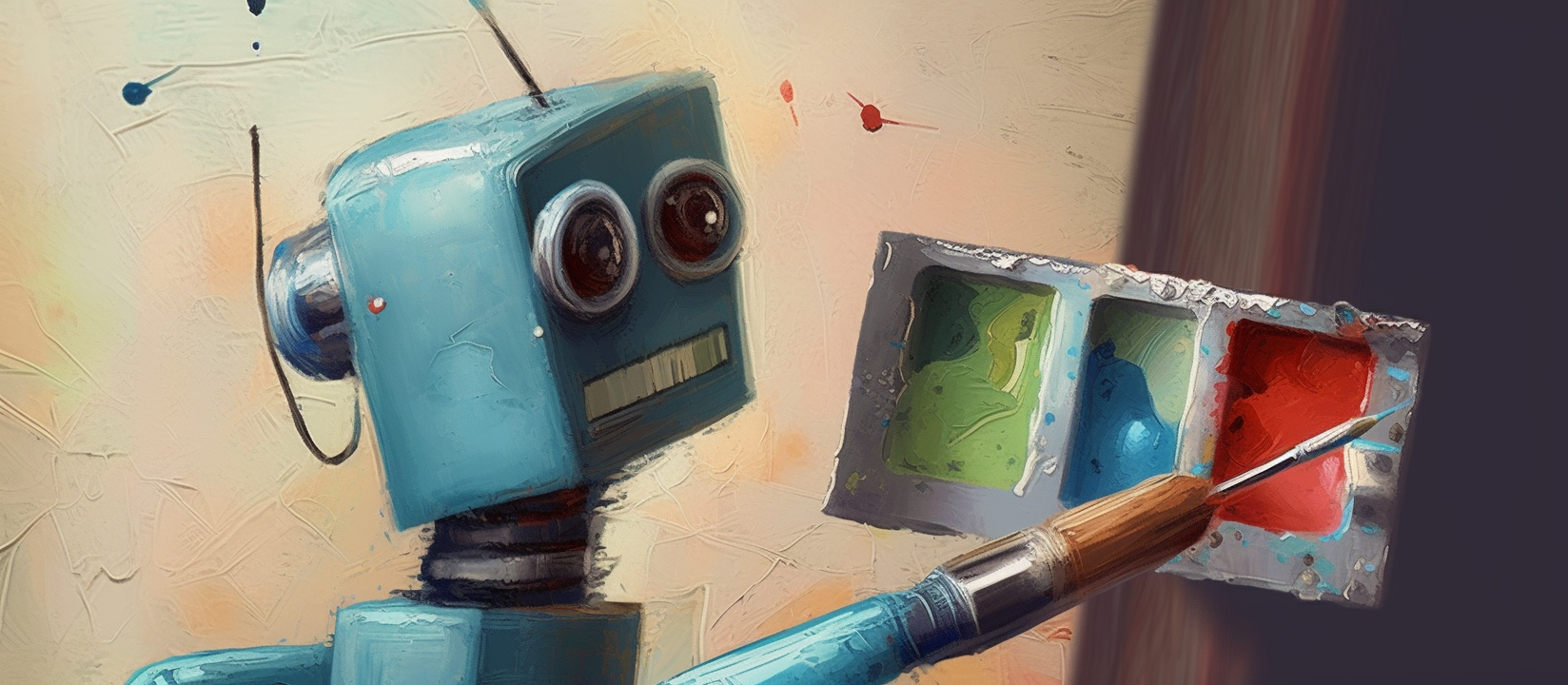What is AI Image generation?

AI has been evolving, constantly.
From the ‘birth’ of AI and cybernetics in the 40s and 50s, self-generating AI in the 60s, to image generators like DALL-E or Midjourney, even the concept of Austin Powers’ ‘Fembots’ all show this industrial obsession with its progression.
More recently, creatives have taken this and are utilising it with current software for efficiency and to create endless visual art, concepts, design and more: though, some are on the fence about it.
Generative AI imagery is the algorithmic visualisation of a text prompt given by the user. But don’t worry if that seems vague, we’ll explore it below.
How does it Work?
AI image generation uses learning techniques to train an algorithm based on existing images and create similar images. This then uses a user’s specific text description and uses this process to generate their desired image.
Here’s a list of how it works:
- Gathering a large dataset of images: The AI learns from this large group of images.
- Preprocessing the dataset: By preprocessing the gathered dataset, perhaps resizing or changing colourways, it can be prepared for training.
- Training the AI: It is then trained on the preprocessed dataset, learning to recognise patterns and features to generate its own images.
- Generating new images: Once all the above is completed, new images can be generated, ranging from realistic to hyper-abstract.
- Fine-tuning: The algorithm may need to be altered for the user to achieve their desired effect. Ex. using a different type of neural network*.
- Validating the results: This may involve human evaluation or automated testing using metrics like peak signal-to-noise ratio (PSNR) and structural similarity index (SSIM).
* In AI image generators, a neural network is a type of machine learning algorithm. It is made up of layers of interconnected nodes that process information and make predictions based on the input data.
Can you copyright AI?
Copyright law is designed to protect creative works that are the product of human authorship, so it can be hard to determine who is the copyright owner of an AI-generated image.
As artificial intelligence technology develops in the creative sphere, there’ll be more discussions about copyright and ownership of the artwork. If users are selling their generated images, they’ll need to take notice of the software and its license agreements.
If the art is inspired by an artist’s work, there can be legal implications if used for general sale or commercial use as permission may be needed.
Whereas in synthetic media, there are fewer restrictions as AI artwork gets used more for memes or simply, personal use.
It’s a useful advertisement for the software as more people will want to try it out.
If you want to get started, have a go at generating some images using:
- DALL-E: easy-to-use AI art generators
- Midjourney: for the best result.
- DreamStudio (Stable Diffusion): customisation and control of an AI-generated image.
What is synthetic media?
The growth in popularity of AI generation has created a sub-genre/style of desired visual content and digital art. ns are being used by corporations and individuals, who sometimes have questionable motives.
Synthetic media is media content that has been manipulated by artificial intelligence. This can include images, videos, audio and text.
It is great for creative industries as it gets public attention and interest, and creates efficiency in the workplace for projects that previously could have taken days.
Creators can now churn out content quicker than before.
The negative side of AI is what’s circling the deep web.
For example, deep fakes use AI and datasets to generate accurate depictions of individuals and place them in motion or still images. This can become incredibly dangerous and even ruin lives.
The Future of AI images
The possibilities of AI are endless, not only in creative industries but in medicine and development too.
Some possible and exciting AI developments could be:
- Improved Realism: highly detailed textures, lighting, and accurate photography styles.
- Applications in VR: creating more realistic/immersive environments, enhancing user experience.
- Enhanced medical imaging: could generate more detailed images for diagnosis and treatment.
- Safety and Security: would allow more realistic simulations for training, and practising emergency responses in safe environments (like VR).
In conclusion, AI image generation has the power to transform the way we make and consume media.
As with any new technology, ethical and legal concerns will need to be discussed. It will become important to manage AI usage and there could even be regulations put in place (as it becomes more complex), to make sure it’s used responsibly.
The risks and advantages must be considered and balanced, so everyone can make the most out of AI generation, regardless of their industry.

